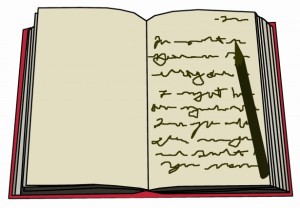 Every author is different and each manuscript they produce varies from another. It is important for authors to be clear about what they are looking for in a critique. If, as an author, you have specific areas you have questions about, then relay this to your critique partner. Don’t be afraid to ask specific questions as this can help guide your reviewer to areas with need outside comment. Asking questions of your reviewer can also help educate them in ways in which to critique.
Every author is different and each manuscript they produce varies from another. It is important for authors to be clear about what they are looking for in a critique. If, as an author, you have specific areas you have questions about, then relay this to your critique partner. Don’t be afraid to ask specific questions as this can help guide your reviewer to areas with need outside comment. Asking questions of your reviewer can also help educate them in ways in which to critique.
Category Archives: Critique
Critiquing
There comes a stage in writing, when an author wants, needs, would benefit from having someone else read their work. Having someone who is not attached to the writing, read it with fresh eyes and then offer feedback can be invaluable. Of course, this can be challenging too, but this is usually the stage when the author, the writing needs to be challenged in order to develop, to improve.
Narrative Techniques in Travel Writing
Travel writers can effectively borrow from fiction, using narrative techniques and literary devices to improve their non-fiction writing. Creative non-fiction is engaging as well as informative. In my critique of ‘The Year We Seized the Day’ by Elizabeth Best and Colin Bowles, I examine the techniques these authors use to sweep readers up in the story of their journey.
Novel critique
Notions of genre are increasingly slippery and difficult to pin down in contemporary novels. To what extent does Michael Pryor’s Hour of Need draw on features of more than one genre? What are the effects of such intermingling of genres and especially their ideological implications?
Pagan’s Curse
Through careful characterisation, Catherine Jinks positions readers of Pagan’s Crusade to initially dislike the character of Joscelin, an old acquaintance of the protagonist, Pagan. Jinks’ use of flashbacks within a chronological narrative structure, give insight into Joscelin’s shady past and simultaneously implicates Pagan in events that have potential to compromise the readers’ initial admiration of the protagonist. Pagan’s Crusade is a dialogic novel. Mike Cadden argues that, “The dialogic or double-voiced text represents voices as equal and provides alternative interpretation that offer, in their aggregate, no single and final answer for the reader.” (Cadden, M., 2000, pp. 147). Jinks uses time shifts and creates in Pagan a first person unreliable narration, in which the reader discovers a level of comprehension for Joscelin’s situation and an awareness of how difficult life was in Jerusalem in 1187. In presenting a past association between Joscelin and Pagan, Jinks encourages readers to compare these two seemingly contrasting characters. As a result of Jinks’ strategies of double-voicedness, readers see both characters as well-rounded and human, making human decisions and errors; this in turn enables readers to identify with the characters, feel empathy for them, struggle with the same questions and feel as though they are making their own opinions of these characters.
Fairytales
Did you know that from as early as the 16th century fairytales (originally an oral tradition) were collected in written form: with Le piacevoli notti (The Pleasant Nights 1550-53) by Giovan Francesco? This past week I have been stuck into critiquing different versions of the Little Red Riding Hood fairytale for an essay I am writing. Not much novel writing has taken place, but plenty of other writing.
Myths, hero tales and theory
I have been plumbing the depths of literary theory and analysis of hero tales and myths. This is part of my Masters degree – the last unit actually (HOORAH!), but is also quite useful background knowledge in writing a novel in which the protagonist is female, and a historically persecuted one at that. The theory is prompting me to consider what type of image of ‘girl’ I am projecting in the novel and what kind of image this gives prospective teen readers.

